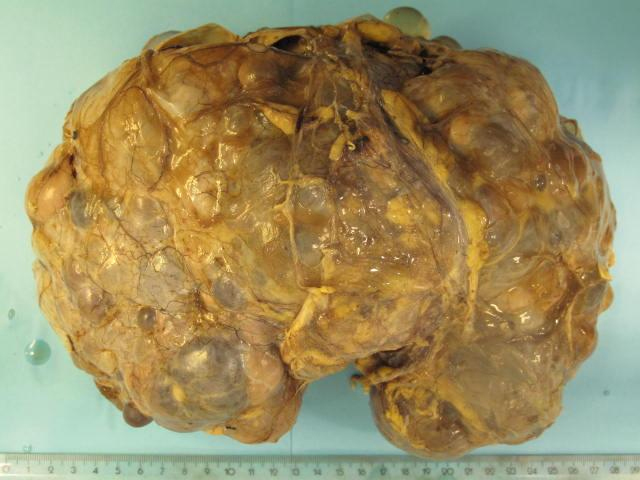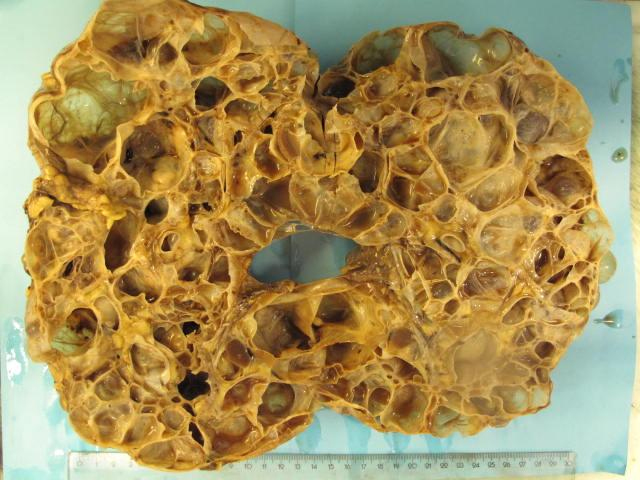Autosomal dominant polycystic kidney disease (ADPKD)
Introduction
ADPKD is the most common form of genetic kidney disease. The prevelance of the diseases is relatively even over the whole world and is between 1:400-1:1000. The majority with the disease will require renal replacement therapy at some point and ADPKD is the underlying diseases in about 10% of patients with renal replacement therapy in Norway.
Causes
Mutations in the gene that encodes polycysteine are present in patients with ADPKD. This leads to the formation of cysts in the renal tubule system and progressive loss of nephrons.
Pathology
 |  |
| Surface | Cross-section |
Clinical presentation
The kidney function is often not reduced until after 40 years of age, but this can vary from family to family. The patient can present with hypertension, kidney failure or an abnormal urinalysis. Hypertension is present in most patients before the kidney failure is measurable. Flank pain due to bleeding in the cysts, kidney stone pain and recurring UTIs are the most common symptoms.
Urinalysis
Often sparse, even though hematuria and light proteinuri can occur.
Prognosis and treatment
The majority of patients will need renal replacement therapy at some point. The most important risk factors for progression are genetic factors, hypertension and proteinuria. There is no specifc treatment for the disease. Blood pressure treatment is most important for the rate of progression and hypertension should be treated aggressively. An inhibitor of RAS should be included in the anti-hypertensive regime. Otherwise, ADPKD is a systemic disease that can also affect other organs with the formation of cysts that can cause complications. Cysts in the liver and pancreas are the most common. Vascular intracranial aneurism bleedings are more common in ADPKD patients as well as heart valve diseases. If there is a familial history of intracranial bleedings, there is a 20% chance of finding an intracranial aneurism and MRI screening should be considered.
Cardiovascular disease is the most common cause of death amongst these patients. Cholesterol lowering treatment is therefore an important part of the treatment of ADPKD patients together with adequate blood pressure treatment.
Read more about ADPKD
UpToDate



